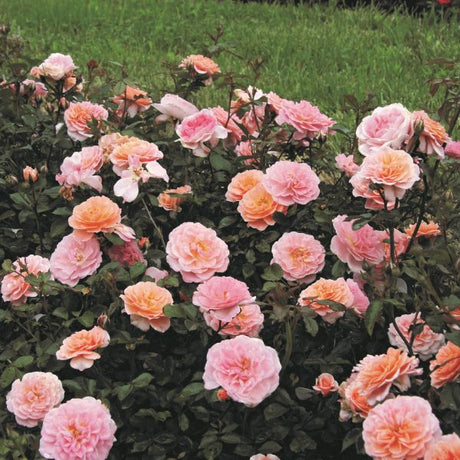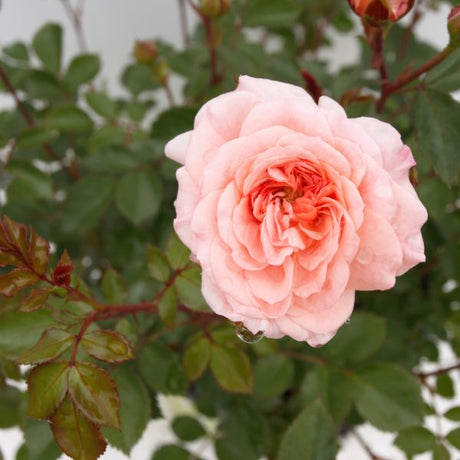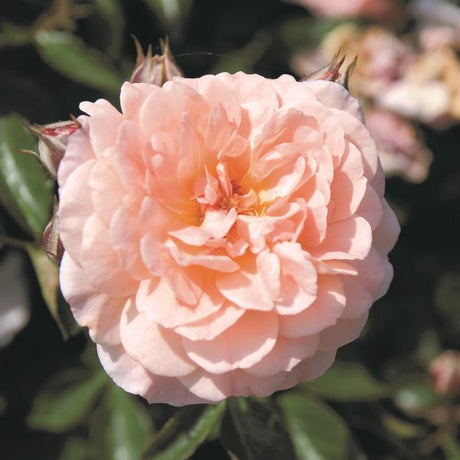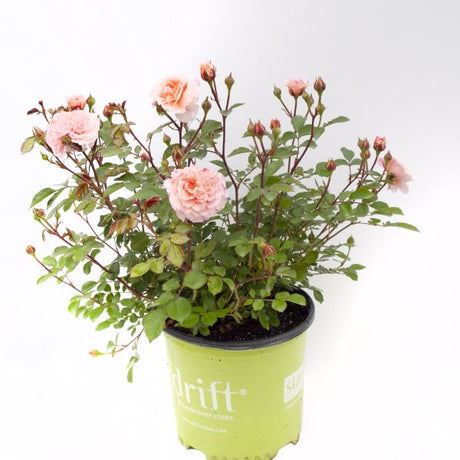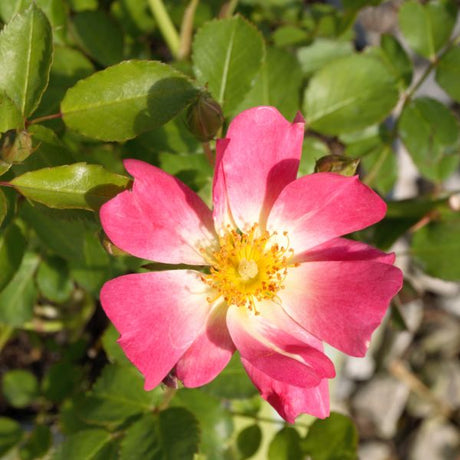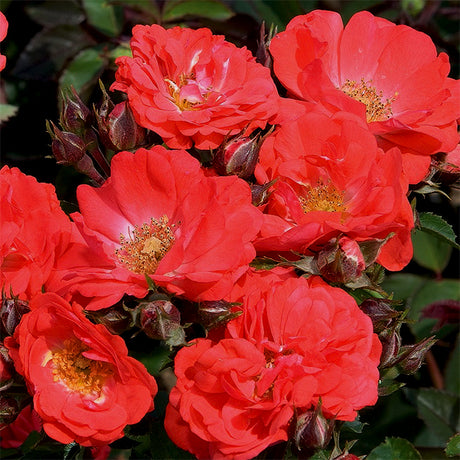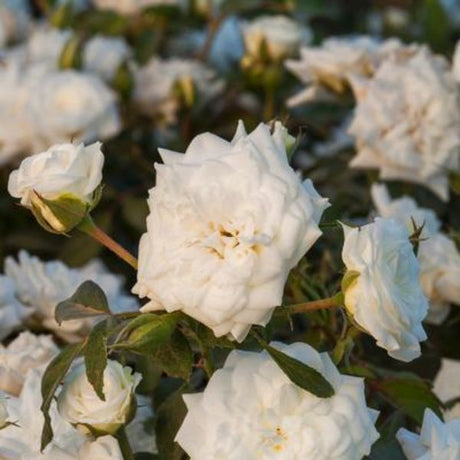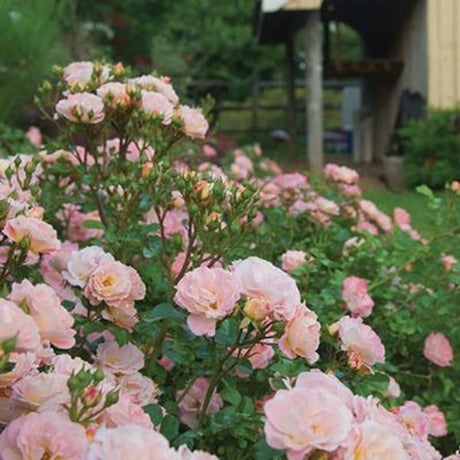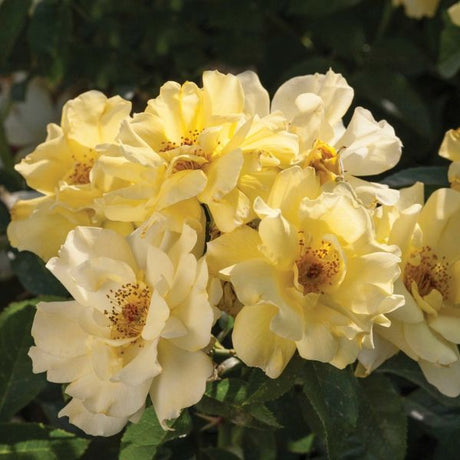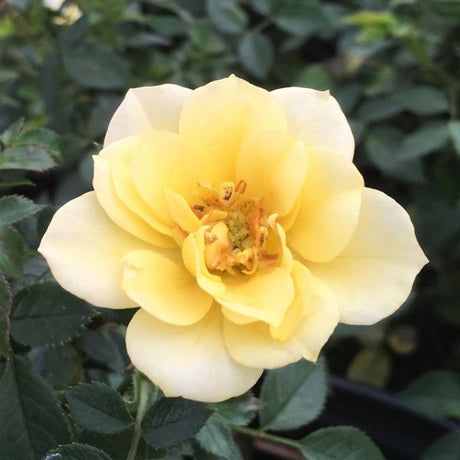- Up to 14% off
Apricot Drift® Groundcover Rose
Rosa 'Meimirrot'
Sale price From $5250 Regular price $6136Unit price /Unavailable - Up to 12% off
Rosa 'Meigalpio'
Sale price From $5250 Regular price $5969Unit price /Unavailable - Up to 16% off
Popcorn Drift® Groundcover Rose
Rosa 'Novarospop'
Sale price From $5250 Regular price $6223Unit price /Unavailable - Up to 18% off
Rosa 'Meiswetdom'
Sale price From $5250 Regular price $5757Unit price /Unavailable - Up to 11% off
Rosa 'Meiggili'
Sale price From $5250 Regular price $5903Unit price /Unavailable - Up to 16% offNew arrival
Rosa 'Meijocos'
Sale price From $5250 Regular price $6218Unit price /Unavailable - Up to 14% off
Rosa 'Meidrifora'
Sale price From $5250 Regular price $6102Unit price /Unavailable - Sold out
- Sold out
- Sold out
- Sold outUp to 12% off
Rosa 'Meisentmil’
Sale price From $7807 Regular price $8845Unit price /Unavailable
Summer Dreaming With Drift® Roses
Roses have gotten a bad rap in the past for being more work than their worth but Drift® Roses aim to turn that reputation upside down. Their tagline sums it up nicely: Groundcover Roses Made Easy®.
The Drift series has been painstakingly bread to stay a manageable size and bloom continuously from spring until the first frost. More blooms and less work is their continued goal.
This brand is part of the Star® Roses and Plants family, which has been bringing exceptional plants to gardens around the world since 1897. As you can imagine, they've learned a thing or two over the last century and they'd like to share their creations with you!
You won't be the only ones enthralled by these delightful re-blooming blossoms. Beneficial pollinators like butterflies will be attracted in droves. Their lackadaisical fluttering will add to your garden allure.
In more detail, these varieties are crosses between full-size groundcover roses and miniatures. They've taken the best qualities from the former, such as their toughness, hardiness, and disease resistance along with the petite size and reblooming nature of the latter.
With all this in mind, it's no surprise these have been gardeners favorites since their introduction in 2000. Explore their groundcover roses below and start building your dream garden.
Imaginative Garden Inspiration
Red roses, yellow roses, and everything in between can be found in this collection. Use them as a colorful border to your perennial garden beds or on your property line. Use one variety for a pristine look or mix and match to create a scheme all your own.
Fill in any empty space in your front yard garden for easy, low-maintenance show-casing. Their constant reblooming will ensure a gorgeous first impression to any guests you have over.
Friends and neighbors will want to know your secret to such a beautiful rose garden. We'll leave it up to you whether you share your secrets or not!
As a groundcover, these shrubs do quite well at controlling hillside erosion and keeping gentle slopes intact. Add one to your hilly landscape and you won't have to worry about waking up one spring morning to a messy mudslide.
Use Peach Drift® Rose in a container on your back patio as an accent among other varieties or as a standalone statement piece that's sure to be noticed by all.
For a bolder splash of color, try planting a Red Drift® Rose or a Popcorn Drift® Rose for a subtler pop of pastel to tie everything together.
Plant one of each variety in your cutting garden and create a stunning bouquet of roses for your kitchen counters or dining room tables. They have fairly long stems that are perfect for flower arrangements.
Drift Rose #ProPlantTips
This collection was created to be so easy to care for that even those of us with brown thumbs can find success. Following a few simples rules will increase your chances even more.
First, you must pick the correct spot to plant. It should be somewhere in full sun, receiving at least six hours of sunlight each day. You'll also want to make sure the soil is well-drained so the roots won't be continuously soggy.
Not sure what kind of soil you have? No problem, dig your hole and pour around five gallons of water in it. If the water is gone in an hour, you have yourself some well-drained soil. If not, consider creating a mound about a foot and a half above ground level and planting in that.
You can also install a raised bed. These are great for controlling drainage as well as soil composition.
Once you've settled your rose, and its root ball, into its new home, water thoroughly and watch it thrive. If you'd like, go ahead and deadhead the spent flowers for a cleaner look. However, deadheading is not strictly necessary.
The last step in the process we suggest doing is mulching around the base of your plant. This helps protect the roots from the scorching summer sun and will conserve water. Plus, mulch has a way of elevating the overall aesthetic of whichever garden it's added to.
Start your journey as a rose gardener today with the Drift collection. Browse our collection below and see why these shrubs are landscapers' favorites!
FAQ's for Buying Drift® Roses Online
What makes Drift® Roses different from larger shrub roses like Knock Out® when space is limited?
What makes Drift® Roses different from larger shrub roses like Knock Out® when space is limited?
Traditional shrub roses can reach 4–6 ft tall, overwhelming small beds and edging. Drift® Roses were bred by crossing ground‑cover (Rosa × ‘Meidiland’) genetics with repeat‑blooming miniature roses. This yields compact plants just 18–24 in. tall and 2–3 ft wide that flower continuously from spring to frost. The low, spreading habit covers bare soil, suppresses weeds, and softens hard edges, giving homeowners the color impact of a full‑sized shrub in a footprint suited to front borders, retaining‑wall tops, and containers—solving the “too‑big” problem before purchase.
Which USDA hardiness zones do Drift® Roses thrive in, and how can gardeners push the limits in colder or hotter regions?
Which USDA hardiness zones do Drift® Roses thrive in, and how can gardeners push the limits in colder or hotter regions?
Drift® Roses are reliably hardy in Zones 4–11. In Zones 4–5, winter lows can kill above‑ground stems, but roots survive if mulched 3–4 in. deep after hard frost; new shoots emerge in spring and still bloom on new wood. In Zones 9–11, afternoon heat can stall flowers—site plants where they receive morning sun and afternoon shade, and maintain evenly moist soil with a 2‑in. mulch layer. Matching zone expectations with micro‑climate tweaks secures year‑round survival and bloom.
What planting steps ensure Drift® Roses establish quickly and bloom heavily their first season?
What planting steps ensure Drift® Roses establish quickly and bloom heavily their first season?
1) Work 2 in. of compost into the top 10–12 in. of native soil for drainage and nutrients. 2) Dig a hole twice the pot width, loosen circling roots, and set the crown 1 in. above grade to prevent rot. 3) Back‑fill, firm gently, and water deeply to settle soil. 4) Apply a 2‑in. organic mulch, keeping it 2 in. from stems. 5) Provide 1 in. of water twice weekly until new growth is visible, then switch to deep soaks when the top 2 in. dry. This sequence (soil prep, proper depth, moisture, mulch) minimizes transplant shock and channels energy into immediate flowering.
How should I prune and fertilize Drift® Roses to keep them compact yet flower‑filled all season?
How should I prune and fertilize Drift® Roses to keep them compact yet flower‑filled all season?
Drift® Roses bloom on new wood, so perform a single rejuvenation cut in late winter: reduce all canes to 6–8 in., removing dead or crossing stems to open the center. This sparks dense, fresh growth that sets buds quickly. Feed with a slow‑release, balanced rose fertilizer at pruning time and again midsummer; avoid high‑nitrogen formulas that spur foliage at bloom’s expense. Lightly shear or deadhead spent clusters every few weeks to trigger faster rebloom, but if time is tight the self‑cleaning petals will still keep color coming.
Are Drift® Roses truly disease‑resistant, and what simple care keeps foliage healthy without heavy spraying?
Are Drift® Roses truly disease‑resistant, and what simple care keeps foliage healthy without heavy spraying?
Breeders selected Drift® lines for high resistance to black spot and powdery mildew—the two most common rose diseases—by evaluating foliage under no‑spray conditions for multiple seasons. While occasional outbreaks can occur in extreme humidity, three practices keep leaves clean: (1) plant in full sun for fast‑drying foliage; (2) space plants so air circulates between canopies; (3) water at the base early in the day rather than overhead at dusk. If disease appears, remove infected leaves and apply a mild organic fungicide; routine chemical spray programs are rarely needed.

